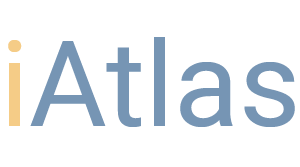About CRI iAtlas
The Cancer Research Institute (CRI) iAtlas is an interactive web platform and a set of analytic tools for studying interactions between tumors and the immune microenvironment (Eddy et al., F1000Research 2020). These tools allow researchers to explore associations between a variety of genomic characterizations of immune response, clinical phenotypes, germline genetics, and response to immunotherapy. Immune checkpoint inhibitor analysis modules allow for interactive exploration of the relationship between possible biomarkers of immune response and the outcome of response to checkpoint blockade, by direct comparison and using multivariable statistical models. Underlying these modules is a harmonization of primary sequencing data from 12 immuno-oncology trials with genomics data and matched clinical data available in the public domain. iAtlas also allows researchers to identify how tumor-intrinsic alterations, including mutations, copy-number alterations, and neoantigens relate to the immune microenvironment as evidenced in cancer genomic studies. The initial version of CRI iAtlas was based on an analysis performed by The Cancer Genome Atlas (TCGA) Research Network on the TCGA data set comprising over 10,000 tumor samples and 33 tumor types (Thorsson et al., Immunity 2018). In this analysis, each tumor sample was scored for a variety of readouts for immune response, including immune cell composition, adaptive cell receptor repertoire, cancer-immune subtypes, neoantigen load, and expression of genes coding for immunomodulatory proteins. iAtlas has now expanded to share immune characterization of data from another large consortium: Pan-Cancer Analysis of Whole Genomes (PCAWG). Work is underway to incorporate additional immuno-oncology data sets and immune-related aspects of The Human Tumor Atlas Network (HTAN). CRI iAtlas is made possible through a collaboration between the Cancer Research Institute, Sage Bionetworks, the Institute for Systems Biology, and the Vincent Lab at the UNC Lineberger Comprehensive Cancer Center.
How to Cite Us
Please cite the CRI iAtlas paper (PubMed: 33214875) when you use CRI iAtlas.
Eddy JA, Thorsson V, Lamb AE, Gibbs DL, Heimann C, Yu JX, Chung V, Chae Y, Dang K, Vincent BG, Shmulevich I, Guinney J. CRI iAtlas: an interactive portal for immuno-oncology research. F1000Research 2020, 9:1028.
About CRI iAtlas Explorer
The main feature of the iAtlas web tool is the iAtlas Explorer, which provides several analysis modules to explore and visualize results on immune response in cancer. Each module presents information organized by theme, with multiple views and interactive controls:
Immune Checkpoint Inhibition Analysis Modules:
These modules allow you to explore the relationship between possible biomarkers of immune response and the outcome of response to ICI, based on publicly available datasets that we have processed for use in iAtlas:
- Datasets Overview: Explore categories and groups of the available datasets.
- Clinical Outcomes: Plot survival curves based on immune characteristics and identify variables associated with outcome.
- Hazard Ratio: Create Cox Proportional Hazard Regression Models and visualize Hazard Ratio in a heatmap and a forest plot.
- Immune Features: See how immune readouts vary across your groups and ICI datasets.
- Immunomodulators: Explore the expression of genes that code for immunomodulating proteins, including checkpoint proteins.
- Machine Learning: Train and run multivariable models with cross-validation on ICI genomics and immunogenomics data.
Cancer Genomics Analysis Modules:
- Cell-Interaction Diagram: Explore cell and protein abundance on an illustration.
- Clinical Outcomes: Quantify the relationship between immune response and disease outcome, in terms of either overall survival (OS) or progression free interval (PFI).
- CNV Associations: Explore associations of microenvironment with gene copy number.
- Driver Associations: Explore associations of microenvironment with cancer driver mutations.
- Extracellular Networks: Explore the extracellular networks modulating tumoral immune response.
- Germline Analysis: Explore the germline genetic contribution to the immune landscape of cancer.
- Immune Feature Trends: Visualize how immune readouts vary across sample groups.
- Immunomodulators: Explore the expression of genes that code for immunomodulating proteins, including checkpoint proteins.
- IO Targets: Explore the expression of genes that code for immuno-oncological (IO) targets.
- TIL Maps: Explore the characteristics of maps of tumor infiltrating lymphocytes obtained from analysis of H&E images.
- Tumor Microenvironment: Explore the immune cell proportions in sample groups.

